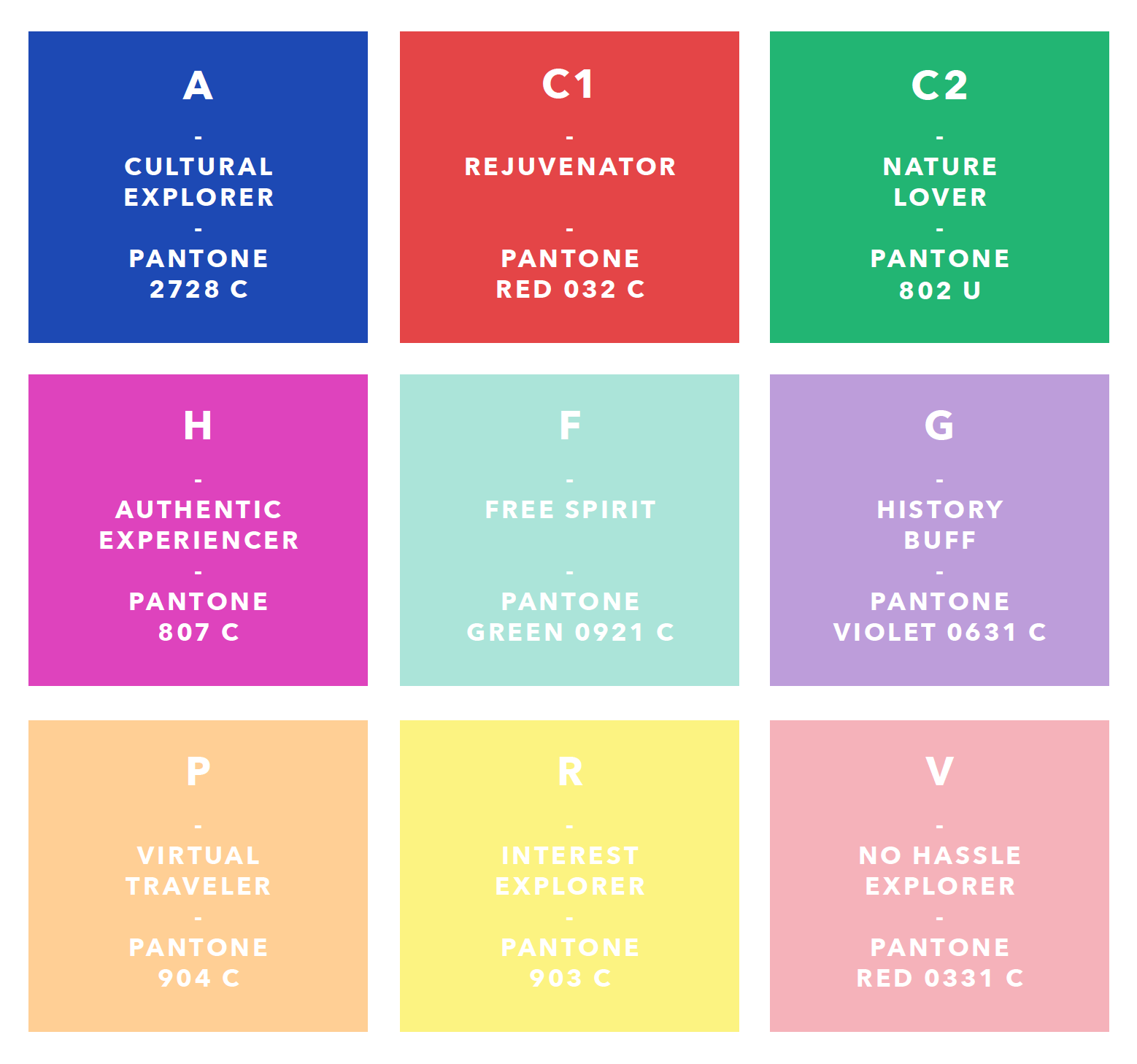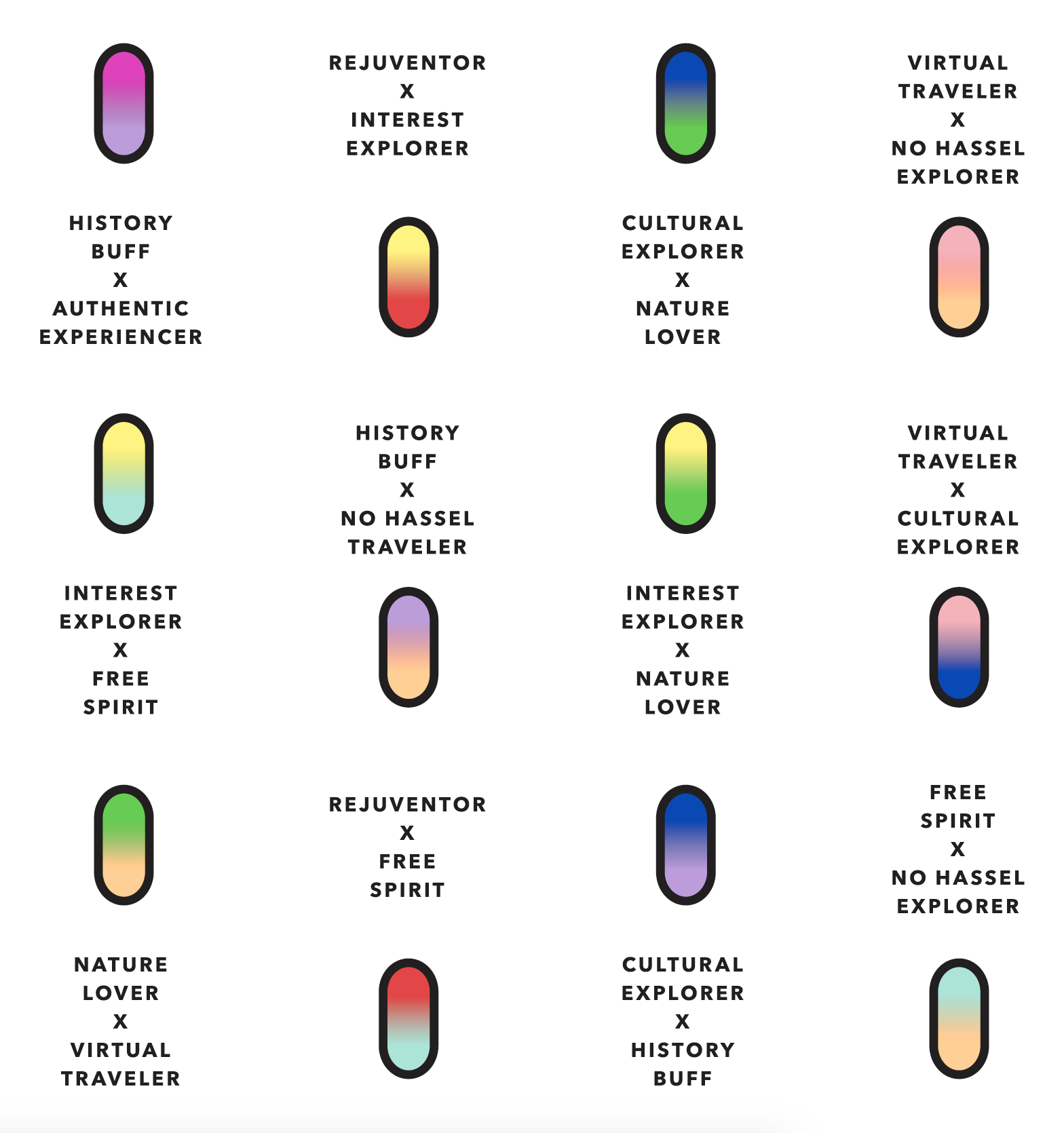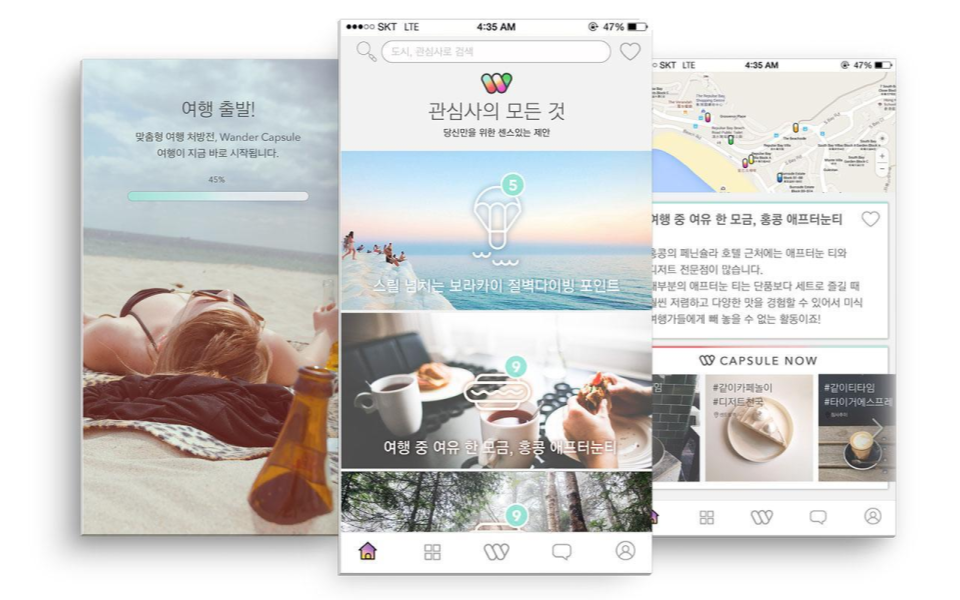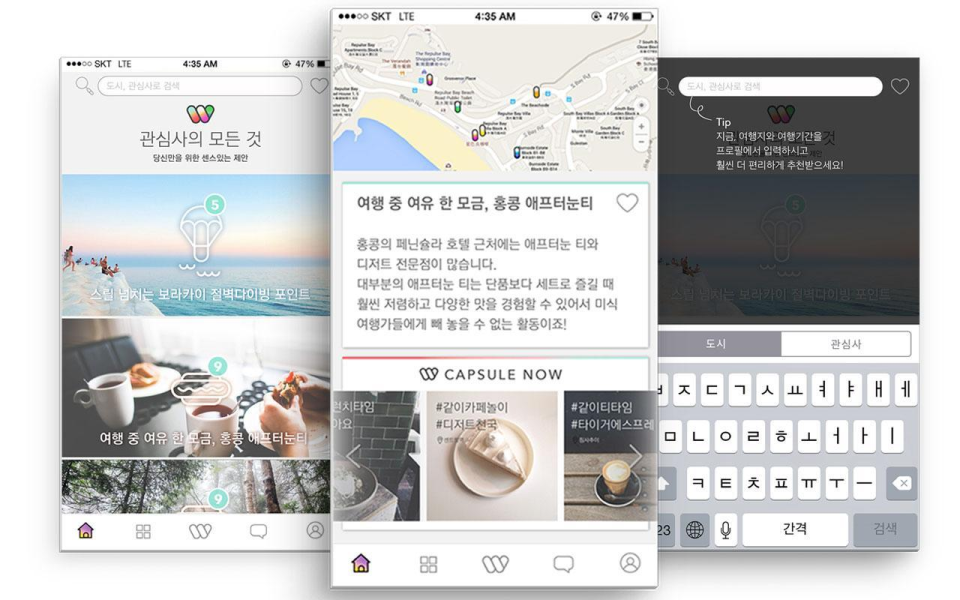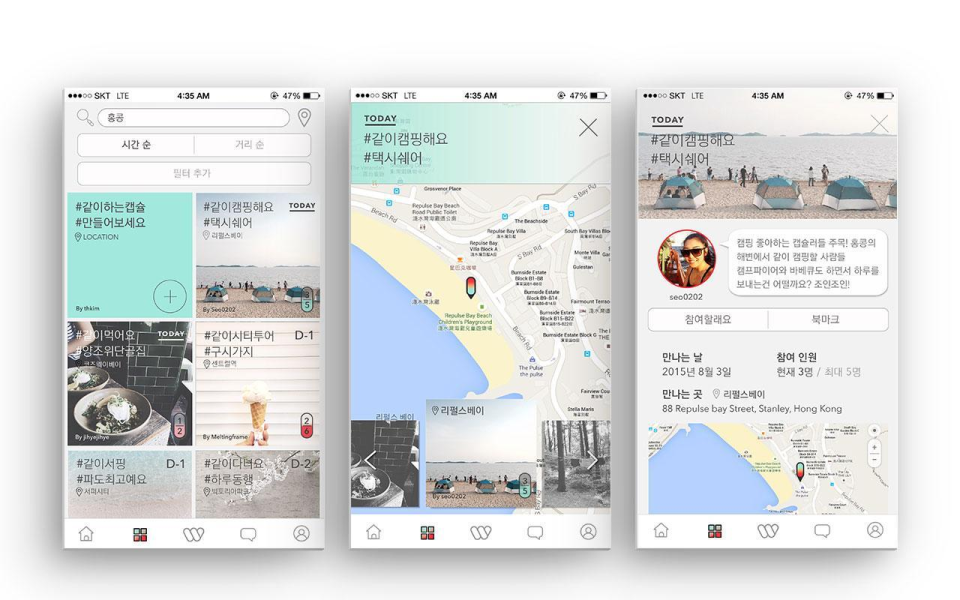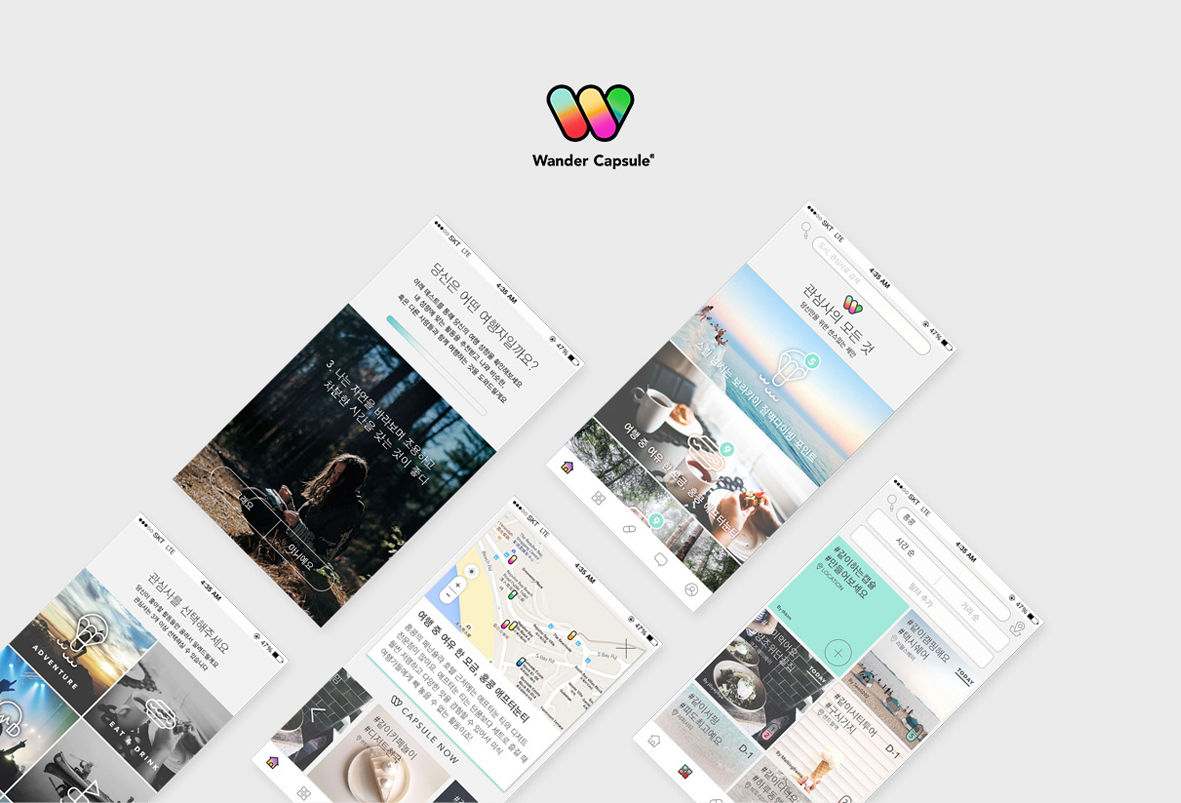Wander Capsule
Travel Solo? Wander Together!Duration
6 month
This is a team capstone project for Graphic Service Design (BA)
Team
Sekyeong Kwon
Seoyoung Jo
Joyce Ryu
6 month
This is a team capstone project for Graphic Service Design (BA)
Team
Sekyeong Kwon
Seoyoung Jo
Joyce Ryu
The Challenge
How might we provide a satisfying travelling experience for people who travel alone? The Outcome
Wander Capsule is a mobile application service that offers opportunities to solo travellers to meet other travellers who have similar interests and style of travel. Promotional video of Wander Capsule
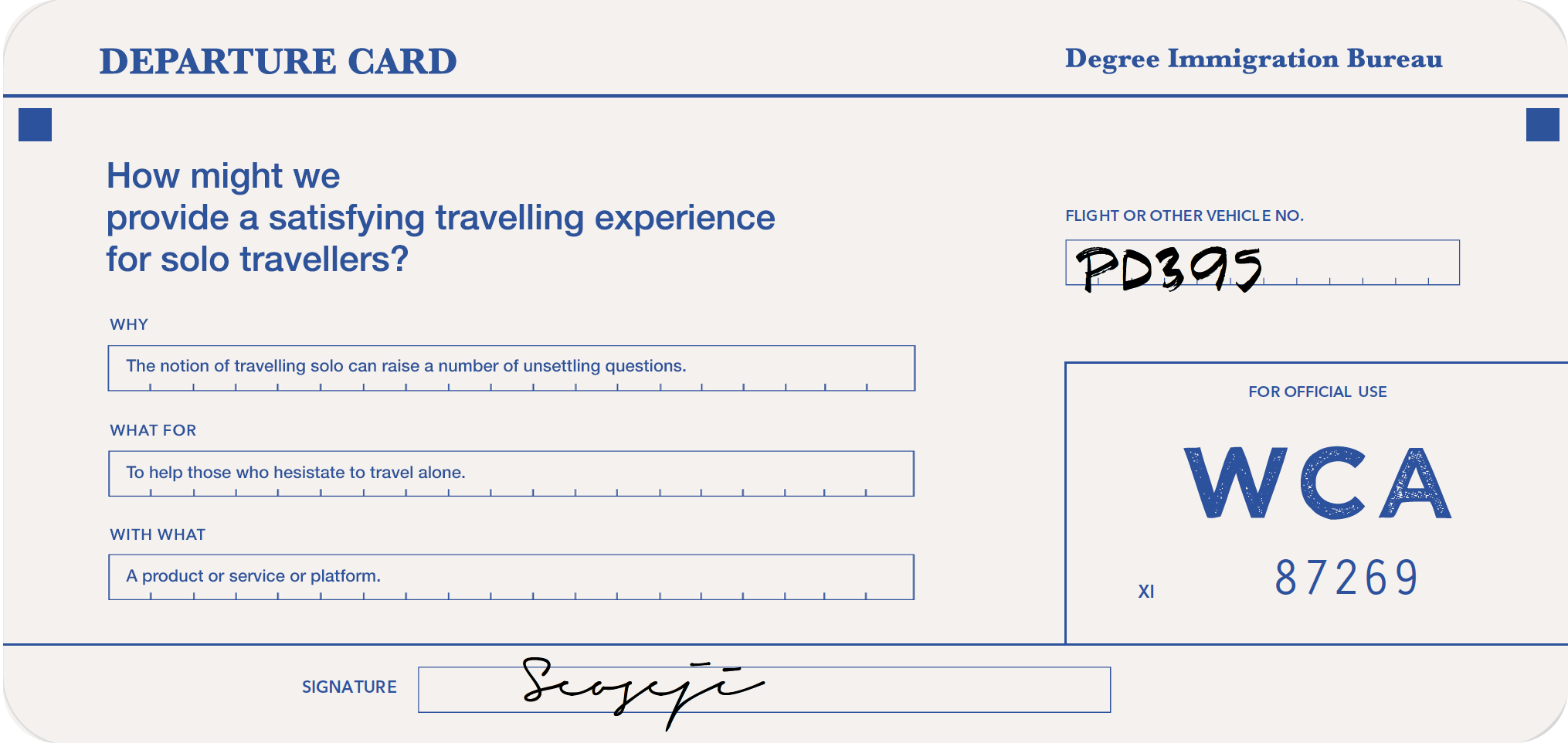
Context and Challenge
We came across an interesting survey, ‘How much can you deal on your own’ asking South Korean audiences if one can eat alone in public, go to Karaoke alone and etc. It was interesting because doing something alone can sometimes be treated extraordinary depending on what you are doing. Among them included travelling solo.
Many articles, surveys about solo travel and travel community showed that travelling alone is becoming a trend in present society. We realised that the notion of travelling solo can raise a number of unsettling questions for the first-timer or people who have had negative experience before - Will I be safe? Will I have fun? What if I feel too lonely?
Many articles, surveys about solo travel and travel community showed that travelling alone is becoming a trend in present society. We realised that the notion of travelling solo can raise a number of unsettling questions for the first-timer or people who have had negative experience before - Will I be safe? Will I have fun? What if I feel too lonely?
Research and Insights
To validate our assumptions and investigate the pain points, we used various user research methods and concluded that most people travelling alone would always have a desire to be with someone on their trips.
We gained the insight that it would be more satisfying if we help solo travellers to deal with situations when they have needs to find other like-minded travellers to share the moments.
a) Online survey
We conducted a survey to learn about people’s travelling experience and what are the elements that we could explore in further research.
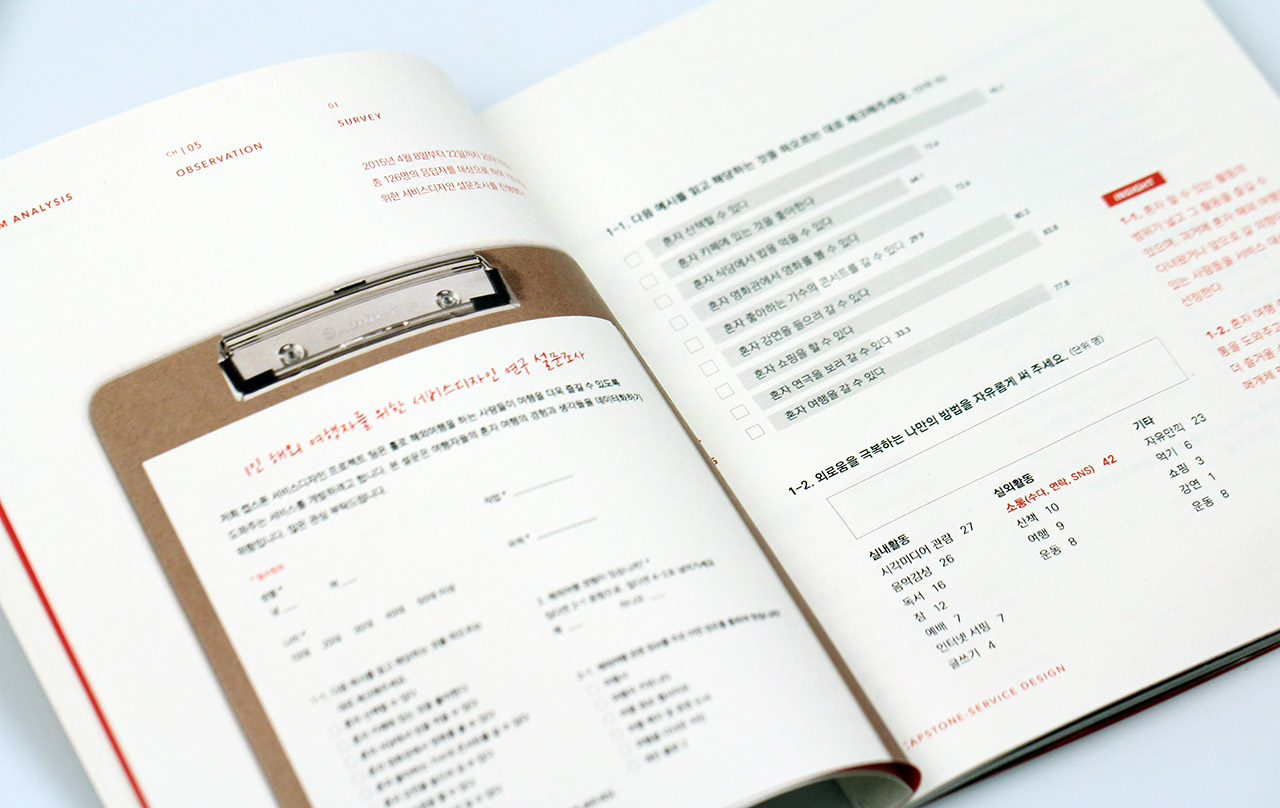
After all the process, we designed series of process books.
This one is the first book - Problem analysis documenting our research.
This one is the first book - Problem analysis documenting our research.
b) Focus group interview
We conducted in-depth focus group with three people depending on the frequency of travelling alone to carefully identify the target audience, their needs and wants.
After grouping the raw data, we found out that going ‘solo’ has lots of benefits but but being alone can be a quite daunting experience as well.

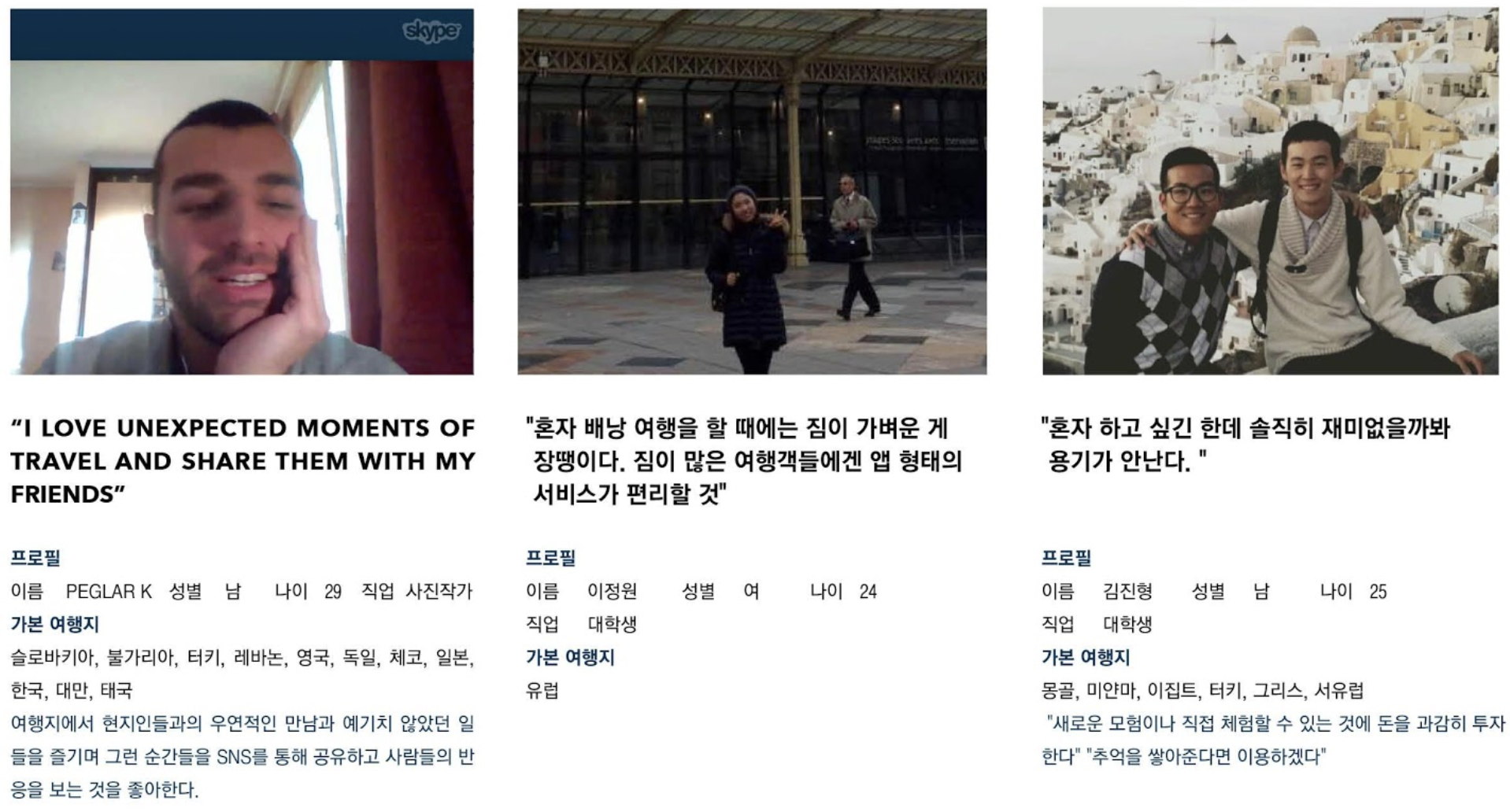

c) Diary studies
In the meantime, we also conducted cultural probes to get unbiased data that has been collected by a participant themselves in context without having our team present.
Our participant was a 23-year-old Korean male who was travelling India for three month alone. We collected and analysed his travel photos and diaries that he wrote at the end of each day. This helped us to understand and overcome cultural boundaries and bring diverse perspectives into our design process.
In the meantime, we also conducted cultural probes to get unbiased data that has been collected by a participant themselves in context without having our team present.
Our participant was a 23-year-old Korean male who was travelling India for three month alone. We collected and analysed his travel photos and diaries that he wrote at the end of each day. This helped us to understand and overcome cultural boundaries and bring diverse perspectives into our design process.
d) Competitor analysis
To know what’s out there and what has worked and has not worked, we did solid investigative market research to analyse different services: MyRealTrip, Gogobot, and Meetup.com.
To know what’s out there and what has worked and has not worked, we did solid investigative market research to analyse different services: MyRealTrip, Gogobot, and Meetup.com.

e) Desk research
From our competitor analysis, we thought the personalisation element was missing from the onboarding of the service. So we conducted a desk research to discover if there are any existing methodology for categorising different travel styles.
We found the Explorer Quotient Toolkit which looks deeper at individual’s personal beliefs, social values and views of the world to learn why different types of travellers seek out entirely different travel experiences.
From our competitor analysis, we thought the personalisation element was missing from the onboarding of the service. So we conducted a desk research to discover if there are any existing methodology for categorising different travel styles.
We found the Explorer Quotient Toolkit which looks deeper at individual’s personal beliefs, social values and views of the world to learn why different types of travellers seek out entirely different travel experiences.

Authentic Explorer is one of nine different travel style classified by EQ Toolkit.
Solution: Wander Capsule

Drawing upon our research, we concluded that meeting with travellers who have not only similar interests but also well-fitting travel style provide more satisfying travel experience.
So we came up with a social travel platform that offers solo travellers opportunity to create or join meetup events based on their interest and travel personality.
Information Architecture & Wireframing
We created IA mapping out the features of the service, and drafted out a low-fidelity wireframe to align our ideas. Next, we made medium-fidelity wireframes with all the functional details to conduct several rounds of user testings.
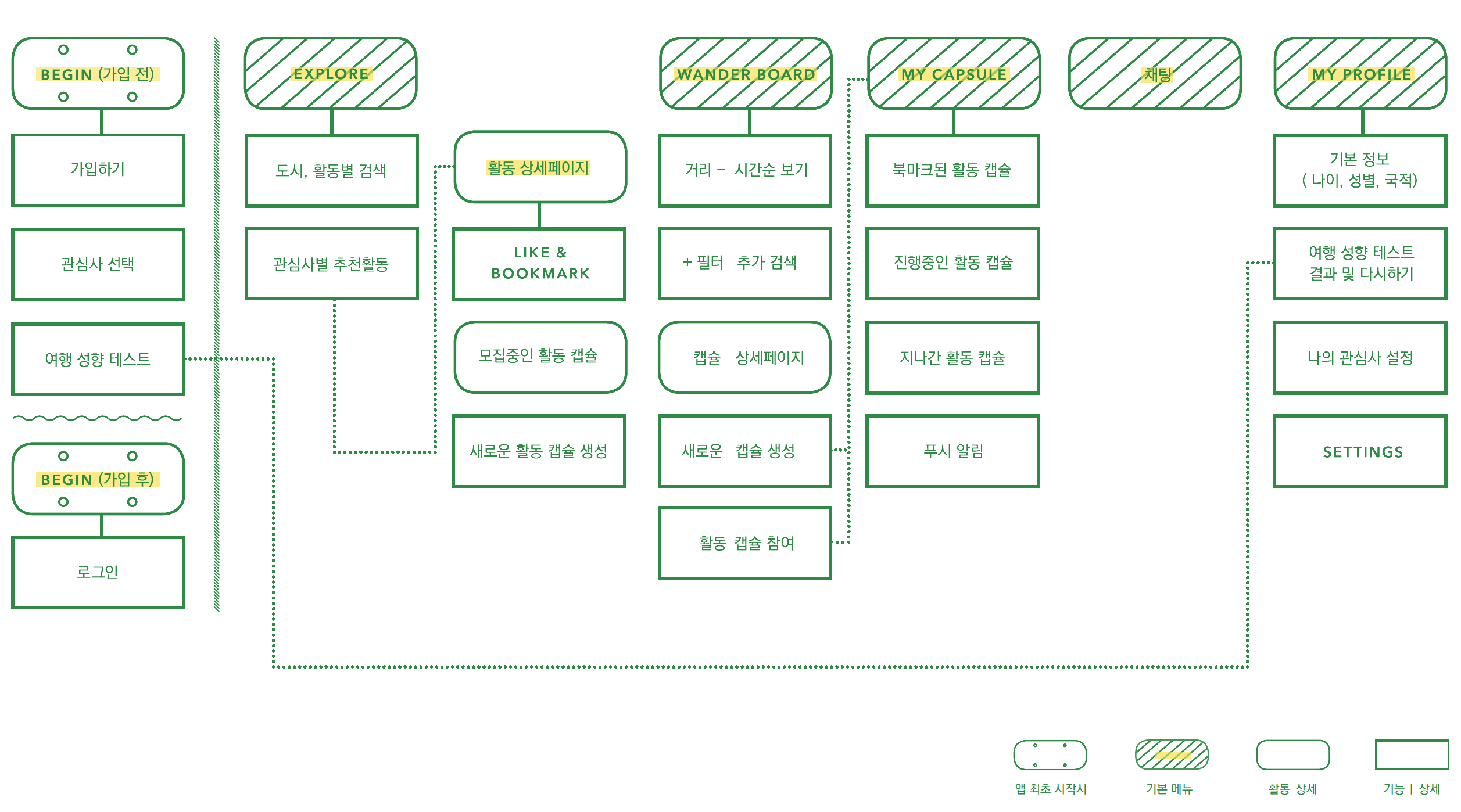
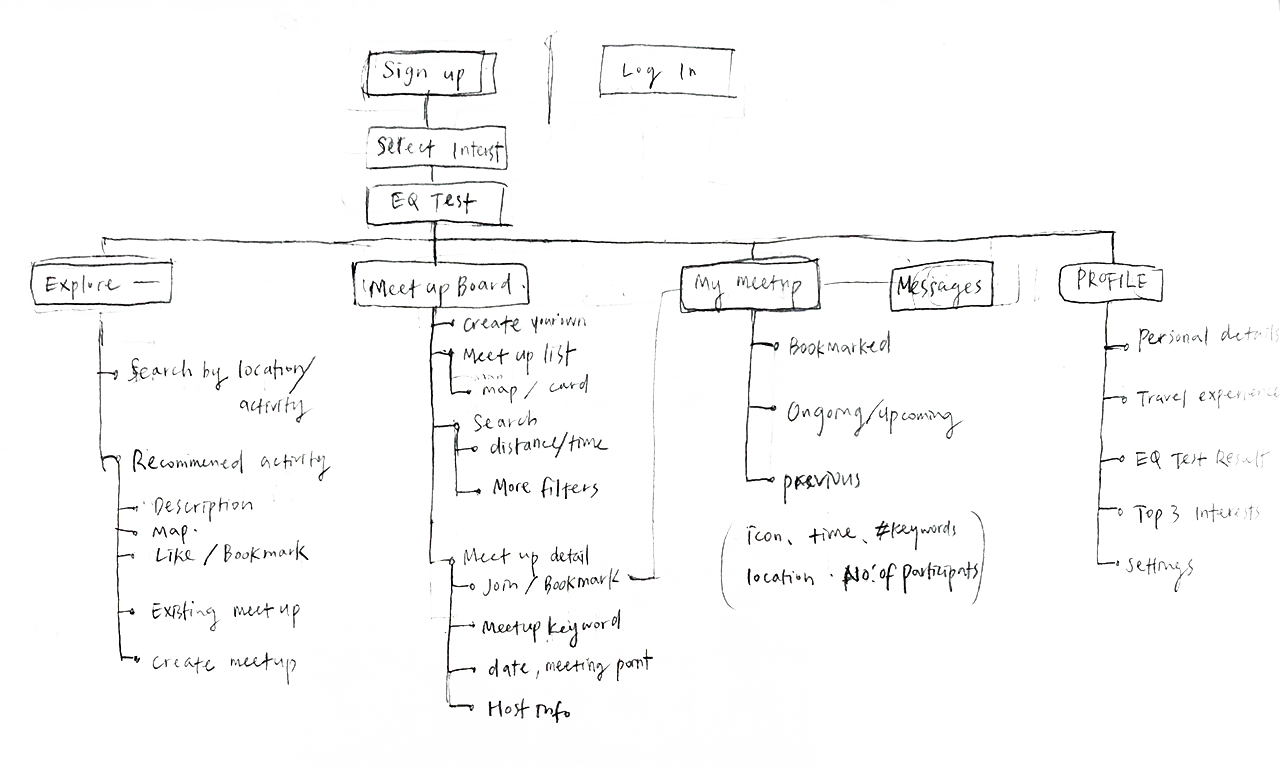

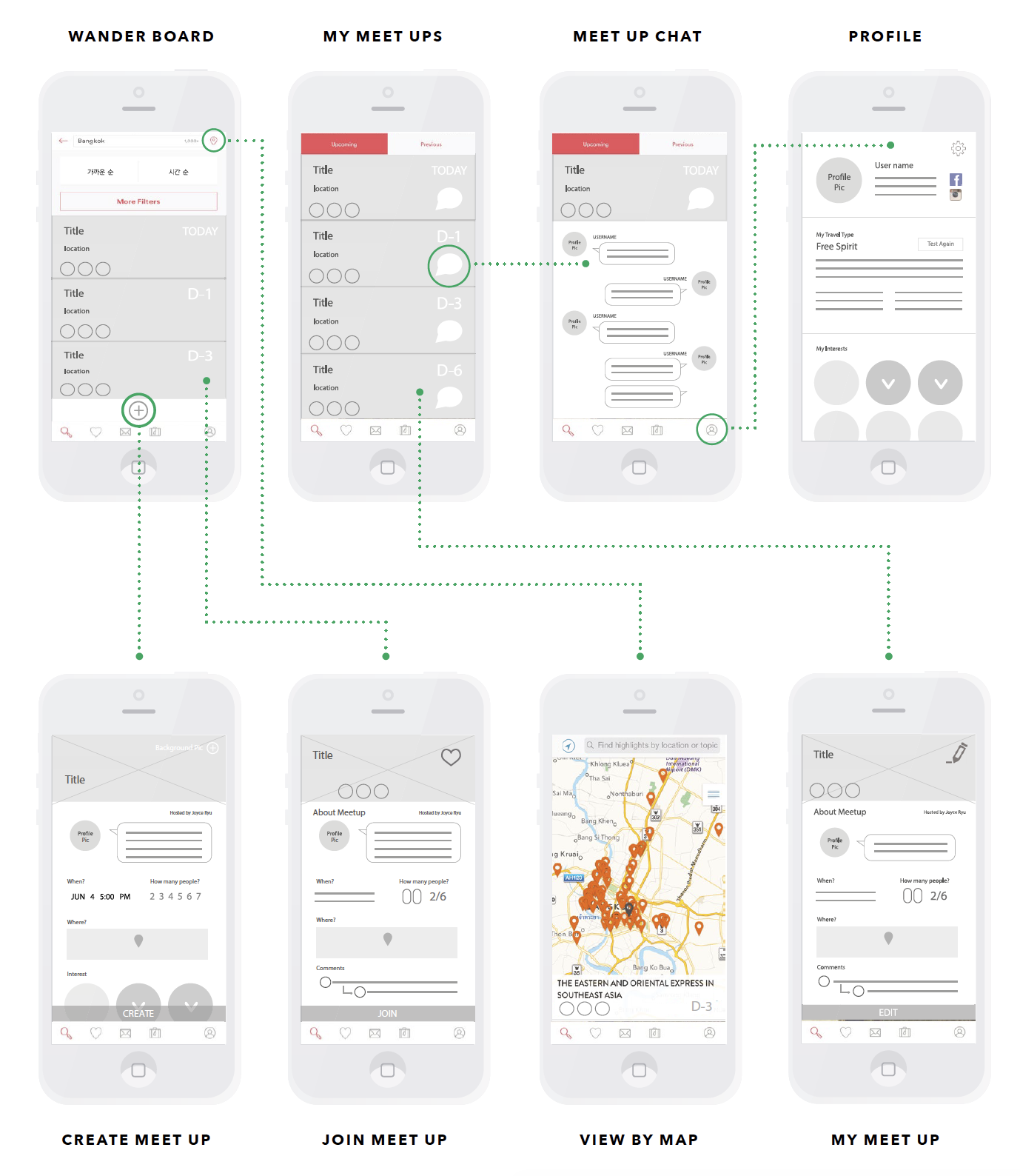

Branding and naming
Inspired by this quote below, we named the meet up event as Capsule in our product and set the graphic motif as a capsule.
In ‘Thoughts on Modern Travelling’, the author Daniel Drake metaphorised travelling as a means of treatment, restoration - a medicine that are not to be found bottled up and labelled on our shelves.
Lots of brainstorming has gone into this process, this is just a short story behind how we named our product - Wander Capsule.


Colour
and visual treatment
We chose different colours for 9 different travel styles that we have in our Traveller’s EQ test. The ones classified relatively active are identified by 5 vivid colors, and the less active styles by 4 pastel tones.
We used gradient to describe solo travellers connecting through Capsules(meet up).
